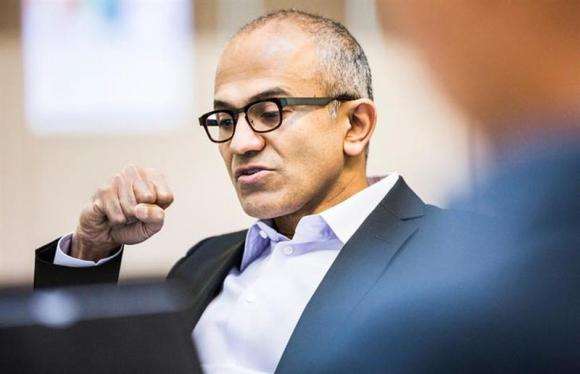Microsoft CEO Satya Nadella hit Australia and New Zealand this week on a whirlwind regional tour, visiting customers and setting an expectation of just how much of the digital world he wants to empower.
Nadella’s three days in Australia – Monday to Wednesday – culminated in a keynote address to a developer gathering in Sydney, where he openly questioned what Microsoft’s legacy to the world will be in five or ten years’ time.
“When you think about any infrastructure in any generation, you always want to think about what’s going to define the applications that you build?” Nadella said.
“What’s going to characterise those applications? When you look back five years from now at the applications built today, what’s going to be that defining characteristic?”
The idea of legacy was important enough to be discussed twice in Nadella’s 45-minute keynote.
It underlines what many pundits see as the emergence of a new Microsoft under Nadella’s leadership: one that is pushing boundaries; is firmly at the front line of advances in personal computing, cloud and AI; and is shaking off some of its entrenched market perceptions.
Indeed, in five or ten years’ time, Nadella wants Microsoft to be remembered for its contribution to enabling innovative and powerful data and intelligence applications.
“[The defining characteristic of our contribution is] going to be about data, or more importantly about reasoning over large amounts of data and being able to create intelligence,” Nadella said.
Whether this occurs or not is a matter of execution, but the company is building a suite of platforms and frameworks that it hopes will enable it – and developers – to make good on its goals.
Nadella glossed over much of the detail in this regard, but Microsoft unveiled several advances this week.
First, it unveiled Azure for Bots, which it hopes developers will use to create software ‘bots’ that act as the front-end to business processes and enterprise systems.
“Just like you built websites or mobile apps in the past, you’re going to now start building bots as new interfaces, new applications,” Nadella said.
“You’re going to take every business process and build a bot interface.
“But in order to do that you need to have natural language understanding, and that’s what the bot framework enables for every developer.”
The company also announced a coup: OpenAI, the artificial intelligence research body set up by entrepreneurs including Elon Musk, is going to run its research workloads on super-powered virtual machines in the Azure cloud.
OpenAI’s mission is to conduct research on AI for the benefit of humanity. Having that research occur on Microsoft’s infrastructure is a solid endorsement for the company’s cloud operations.
But it was not all blue-sky and futuristic thinking for Nadella; he also spent time with a number of Australian customers, learning about where they are using Microsoft tools to push immediate boundaries.
Nadella noted that he’d met up with the Department of Human Services, Cricket Australia, Webjet, BUPA and Beyond Bank, among others.
“Yesterday I had the chance to go to the MCG and to walk onto the field, which has been one of my dreams all my life,” he said.
“I know it’s probably not the best [time] to talk about cricket in Australia, but I was glad to see how Cricket Australia plans on using machine learning.
“Cricket is perhaps one of the richest sports when it comes to data, but how could you harness the power of data to even start having a more intelligent, informed conversation about performance of teams and players.
“Cricket Australia is beginning that journey using some of the same technologies being used by industrial companies or healthcare companies.”
Nadella said his overall take-out from Australia was the broad contributions being made by developers to bring change to “every industry, every vertical, [and] every walk of life.”
“Everyone is becoming more and more digital,” he said.










